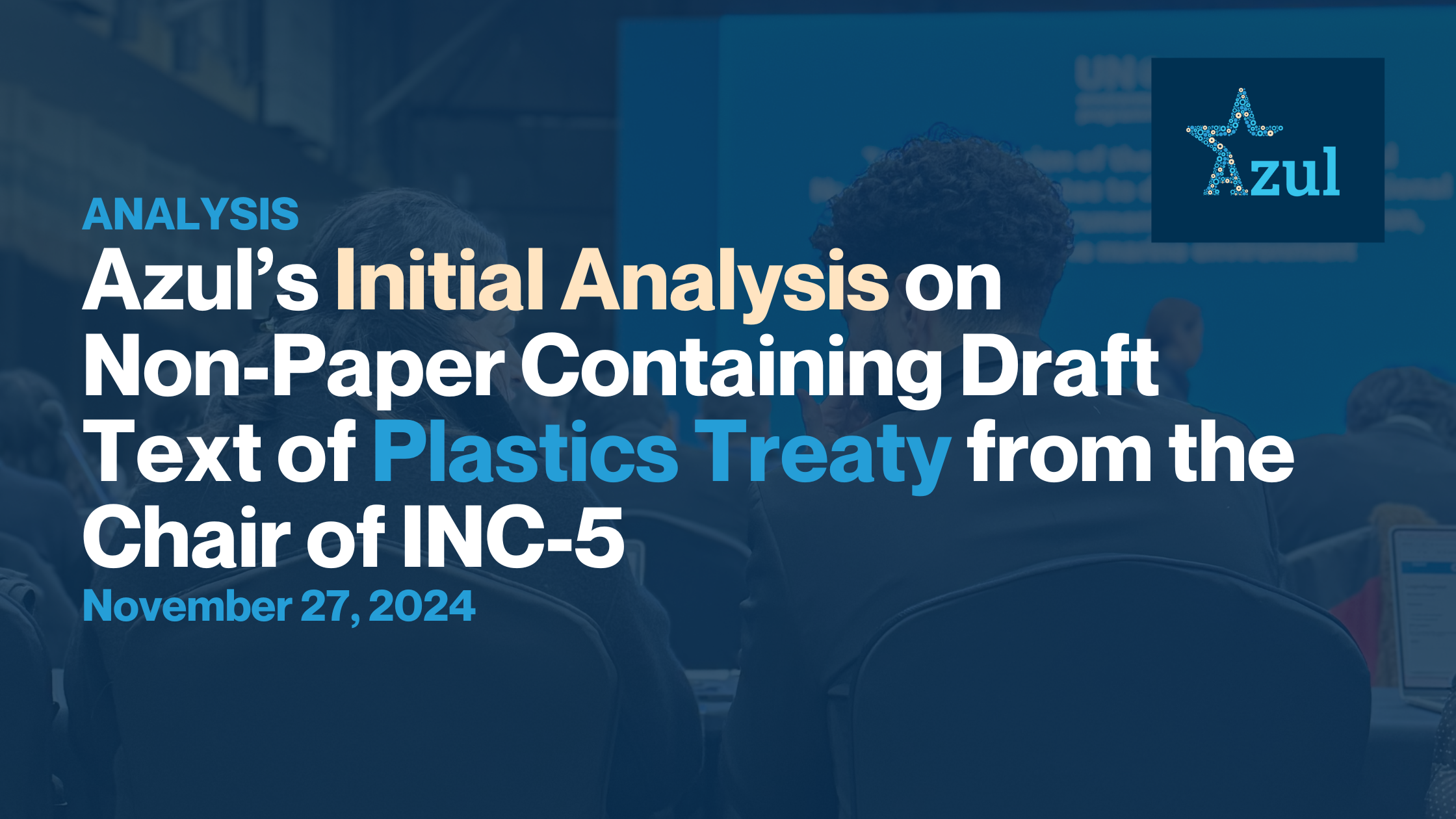Azul’s Initial Analysis on Non-Paper Containing Draft Text from the Chair of INC-5

Azul’s Initial Analysis on Non-Paper Containing Draft Text from the Chair of INC-5
DOWNLOAD: Azul’s Initial Analysis on Non-Paper 4.0 Containing Draft Text from the Chair of INC-5
Following the Chair’s publication of the Non-Paper 4.0 Containing Draft Text from the Chair of INC-5, Azul has reviewed and released an initial analysis of the draft of the text.
Currently, the proposed financing mechanisms could raise concerns about equity, transparency, and effectiveness. Our analysis finds:
• The financing mechanism outlined does not clearly define adequate financial flows from developed countries to those most in need, thereby falling short of addressing critical issues related to equitable access to funding.
• Ambiguous references to the transfer of technology may lead to ineffective solutions, creating a redundant framework that risks misdirecting resources. This ultimately leads to a misuse of funds that could otherwise be allocated to the effective implementation of the treaty.
• Paragraph 9 is unclear regarding the origin of additional resources and the nature of activities linked to blended contributions. Without clarity, there is a high likelihood that these mechanisms will offer only superficial solutions, diverting much-needed resources away from countries that require urgent support.
• Moreover, the article does not include a firm and concurrent commitment from member parties, which undermines the effectiveness of the funding mechanism. This shortfall could reduce the availability of resources for Indigenous communities and nations that are most vulnerable and in need of financial assistance.
• In addition to the points raised, the financing mechanism should establish clear, binding commitments from developed countries; otherwise, it could exacerbate the inequity in funding distribution. Without enforceable obligations or transparent tracking mechanisms, we could see promised resources that do not materialize or are misallocated, leaving developing countries, particularly those most vulnerable to climate impacts, without the support they need to implement the treaty effectively.
• Furthermore, the article should include clarity around how financial contributions will be monitored and reported to avoid opportunities for “greenwashing” or false claims of support. This could lead to situations where countries or institutions are able to report inadequate or misleading funding levels, undermining the trust and cooperation necessary to achieve meaningful progress on the treaty’s goals.
• More attention should be given to the capacity-building needs of the most affected countries. While the transfer of technology is mentioned, there should be more focus on building local expertise or ensuring that these technologies are accessible and usable within the context of developing countries. Without proper knowledge transfer, infrastructure, and human capital development, the promised technologies risk being either impractical or underutilized, limiting their long-term impact.
• Moreover, the proposed financing mechanisms should account for the systemic nature of the challenges that countries in need are facing. While isolated financial contributions may help in the short term, there should be more consideration for long-term, sustainable solutions. Investment in climate resilience and adaptation requires not only immediate funding but also a commitment to long-term economic transformation and capacity-building, particularly in sectors such as healthcare, agriculture, and education, which are essential for community-level resilience.
• Finally, the treaty’s emphasis on blending public and private contributions requires clear guidelines on the roles and responsibilities of private entities to avoid potential conflicts of interest. There is a risk that private sector actors, driven by profit motives, may prioritize projects that benefit their own agendas rather than the communities most in need. This underscores the importance of ensuring that any private sector involvement is subject to stringent accountability mechanisms and is aligned with the principles of equity and justice central to the treaty’s objectives.
DOWNLOAD: Azul’s Initial Analysis on Non-Paper 4.0 Containing Draft Text from the Chair of INC-5